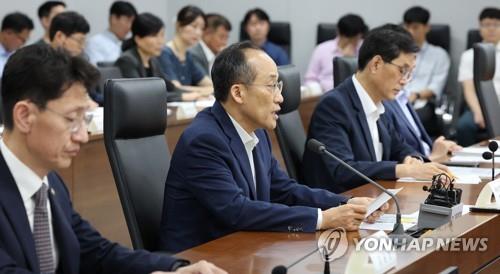- California Assembly OKs highest minimum wage in nation
- S. Korea unveils first graphic cigarette warnings
- US joins with South Korea, Japan in bid to deter North Korea
- LPGA golfer Chun In-gee finally back in action
- S. Korea won’t be top seed in final World Cup qualification round
- US men’s soccer misses 2nd straight Olympics
- US back on track in qualifying with 4-0 win over Guatemala
- High-intensity workout injuries spawn cottage industry
- CDC expands range of Zika mosquitoes into parts of Northeast
- Who knew? ‘The Walking Dead’ is helping families connect
S. Korea seeks active use of state-owned properties to help spur economy
South Korea will seek ways to make better use of state-owned properties to help revitalize the economy and spur regional development, the finance ministry said Monday.
The country has about 1,300 trillion won (US$977.23 billion) in national assets, up from about 1,000 trillion won in 2016, according to the Ministry of Economy and Finance.
“The government had long focused on maintaining and managing state-own properties, which led to a failure in meeting public demand and expectations regarding their usage,” Finance Minister Choo Kyung-ho said during a meeting of a committee on public assets.
“The Yoon Suk Yeol government has decided to shift the policy path on the issue to fully utilize them for supporting the private sector and the economic revival. The government will continue to push for ways to use and develop public assets for the people and local governments,” he added.
The government in August launched a survey of state-owned properties with the goal of either better utilizing or selling unused and idle public lands and buildings, the ministry said.
Last year, the government sold public properties worth 2.1 trillion won to private entities and local governments, it added.
As part of the plans, the government said it will create a searchable database of national properties like prisons for filming locations for local movies and TV shows.
Video footage and images of such facilities will be also available on mobile platforms by 2025, the government added.












